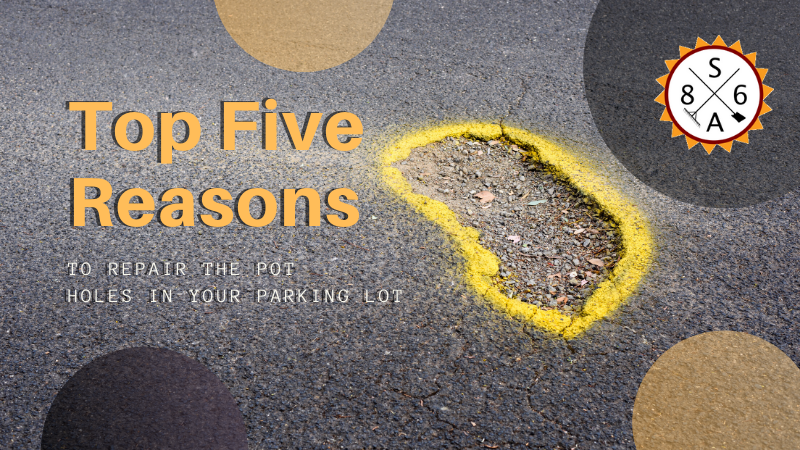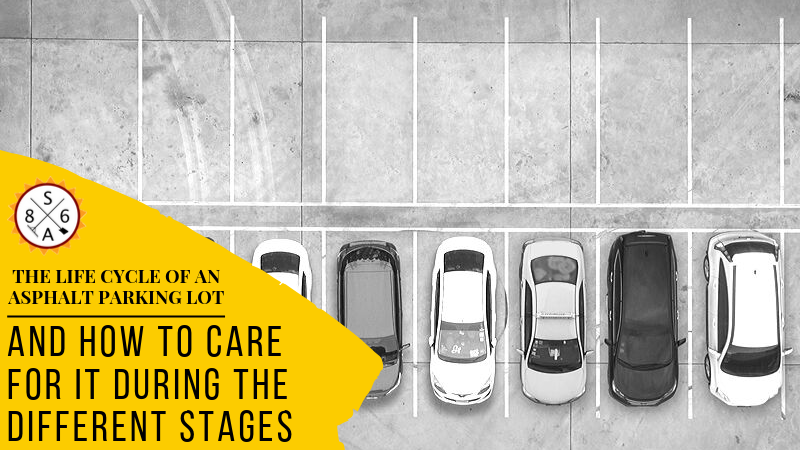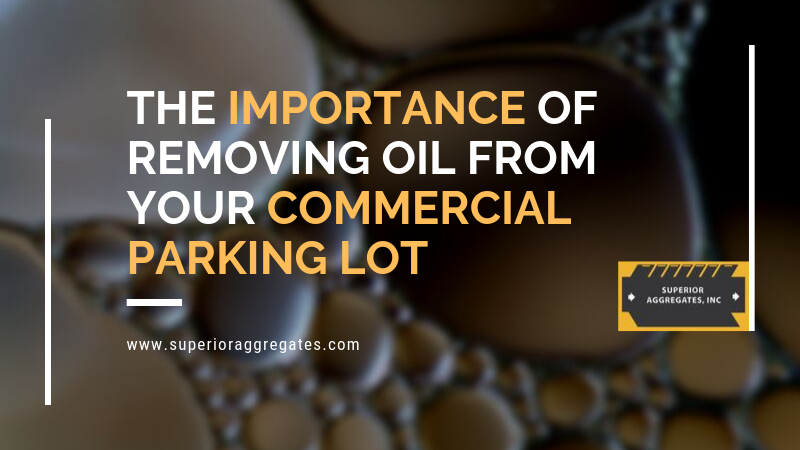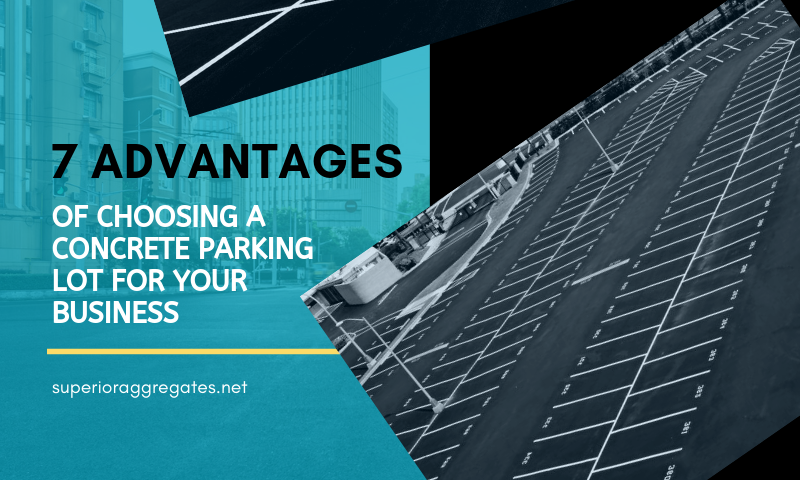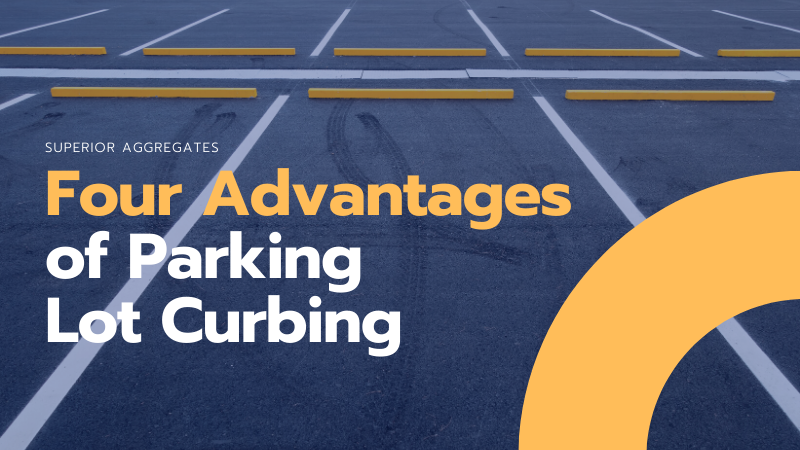
Four Advantages of Parking Lot Curbing
The easier it is for people to park and visit your place of business, the more likely you are to turn a profit and stay open. Yet, many business owners overlook the importance of the layout of their parking areas. A well-designed and properly built parking lot helps to streamline visitation and greatly enhance business potential. Curbing helps to define parking areas and make a business much more attractive and inviting to new and returning customers. In many ways, curbs are highly useful business tools that often get ignored.
Curbs are very useful tools for controlling vehicular and foot traffic. They also help to control water runoff and debris, while enabling faster and more efficient cleaning. When you own a commercial property, do not make the mistake of overlooking the importance of parking lot curbing and how it impacts your business and personal property. Here are four advantages that you get from a high-quality parking lot curb:
1. More Attractive Appearance
Good, clean parking lots always are more appealing than dirty, disorienting layouts. The old saying “curb appeal” describes the ideal parking lot curb that provide clean, straight lines and readily apparent borders between parking and pedestrian areas. The more attractive the external appearance, the more likely people will choose to stop and visit, rather than move on to a more appealing location.
2. Improved Safety
A parking lot can enhance safety when its curbs and lines are laid out clearly. That makes it easier to separate foot traffic and vehicles and improve general safety conditions for customers and business owners alike. It also helps to cut down on fender-benders and other accidents in your parking lot. The easier it is for drivers and pedestrians to navigate the parking area, the safer it becomes. The safer it is, the less stress drivers and pedestrians have while visiting your place.
3. Easier Cleaning and Maintenance
A parking lot curb helps to trap and isolate dirt and debris moved around by wind, rain and people. The curb provides a barrier between foot traffic and the parking area that traps dirt and debris. That makes it much easier to collect and dispose of, while improving drainage during rainstorms. Street sweepers and other cleaners can get at the isolated debris and clean it up faster and more readily than when there is no curb. Snow removal also is much easier when the curb provides a barrier between the plow and sidewalk.
4. Better Parking Areas
Curbs do more than control traffic and improve safety and cleaning. They also strengthen the parking lot by anchoring asphalt paving. Concrete curbs improve compaction when parking lots are built. They also increase the parking area’s stiffness and strength with their weight, and maintain edges against roadway traffic. The curbs also work well for deflecting vehicle loads that otherwise might damage walkways and parking areas. Instead, the curbs deflect those loads, which extends the life of your parking area.
Your parking area is a very important part of your business plan. You need to ensure it has an optimal design that enhances your business aims and makes it easier for people to visit you in person. Curb appeal always helps to make any business better.
The easier it is for people to park and visit your place of business, the more likely you are to turn a profit and stay open. Yet, many business owners overlook the importance of the layout of their parking areas. A well-designed and properly built parking lot helps to streamline visitation and greatly enhance business potential. Curbing helps to define parking areas and make a business much more attractive and inviting to new and returning customers. In many ways, curbs are highly useful business tools that often get ignored.
Curbs are very useful tools for controlling vehicular and foot traffic. They also help to control water runoff and debris, while enabling faster and more efficient cleaning. When you own a commercial property, do not make the mistake of overlooking the importance of parking lot curbing and how it impacts your business and personal property. Here are four advantages that you get from a high-quality parking lot curb:
1. More Attractive Appearance
Good, clean parking lots always are more appealing than dirty, disorienting layouts. The old saying “curb appeal” describes the ideal parking lot curb that provide clean, straight lines and readily apparent borders between parking and pedestrian areas. The more attractive the external appearance, the more likely people will choose to stop and visit, rather than move on to a more appealing location.
2. Improved Safety
A parking lot can enhance safety when its curbs and lines are laid out clearly. That makes it easier to separate foot traffic and vehicles and improve general safety conditions for customers and business owners alike. It also helps to cut down on fender-benders and other accidents in your parking lot. The easier it is for drivers and pedestrians to navigate the parking area, the safer it becomes. The safer it is, the less stress drivers and pedestrians have while visiting your place.
3. Easier Cleaning and Maintenance
A parking lot curb helps to trap and isolate dirt and debris moved around by wind, rain and people. The curb provides a barrier between foot traffic and the parking area that traps dirt and debris. That makes it much easier to collect and dispose of, while improving drainage during rainstorms. Street sweepers and other cleaners can get at the isolated debris and clean it up faster and more readily than when there is no curb. Snow removal also is much easier when the curb provides a barrier between the plow and sidewalk.
4. Better Parking Areas
Curbs do more than control traffic and improve safety and cleaning. They also strengthen the parking lot by anchoring asphalt paving. Concrete curbs improve compaction when parking lots are built. They also increase the parking area’s stiffness and strength with their weight, and maintain edges against roadway traffic. The curbs also work well for deflecting vehicle loads that otherwise might damage walkways and parking areas. Instead, the curbs deflect those loads, which extends the life of your parking area.
Your parking area is a very important part of your business plan. You need to ensure it has an optimal design that enhances your business aims and makes it easier for people to visit you in person. Curb appeal always helps to make any business better.

